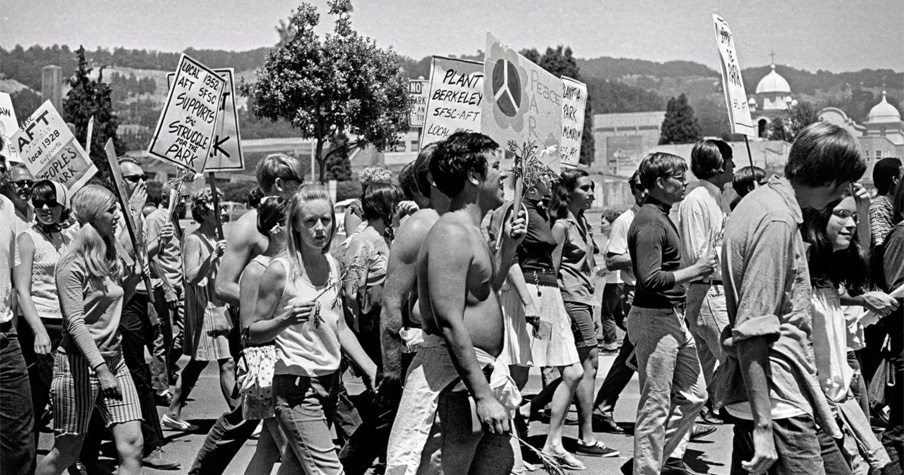
People’s Park has long been a gauge of the nation’s social mores. Its latest incarnation carries the legacy forward. Photo copyright Jane Wiedel
In the middle of the night on Jan. 4, 2024, forklifts across the street from the Berkeley School of Theology began arranging shipping containers, stacked two high and placed end to end, around the perimeter of the adjacent block. It took three days for this unusual fence to be completed. While it was an unexpected addition to the neighborhood, it wasn’t a complete surprise, given the area’s history.
BST faces People’s Park, a countercultural landmark created during the free speech movement at the University of California, Berkeley. Conflict over the plot of land goes back more than 50 years. In 1967, the university acquired the land by eminent domain and cleared it for development. It languished for months as a muddy field before frustrated local residents and activists decided to do something. In April 1969 they laid sod, planted trees, and named it People’s Park.
A month later, the university moved to shut down the park and reclaim its property, securing it with a chain link fence. A standoff between police and protestors led to chaos, dozens of injuries, and one death; although the National Guard withdrew from the area after a few weeks, clashes over the space continued. The chain link fence was torn down in 1972 during a Vietnam War protest, burnishing the park’s reputation as a site of social justice activism.
By 1994, when LeAnn Snow Flesher joined the faculty at BST (then named American Baptist Seminary of the West), activism in People’s Park had declined, the trees were overgrown, and it was known for its drug activity and homeless population. When the park closed, people would walk across the street to sleep on the seminary grounds.
Flesher, now vice president of academics and dean of the faculty, said the BST community desired to provide hospitality to those in need.
In 2021 the Cal regents voted to build the long-planned student residences on the site. In 2022, the university twice erected fences around the park to start the project; protesters tore them down. The third fence – the shipping containers – held.
Flesher’s third-floor office overlooks the park, and she has a view beyond the fence. She sees the progress that’s slowly happening. In addition to the new housing for more than 1,100 students, the project includes 125 apartments of permanent, supportive housing for people in need of shelter and a paneled walkway displaying a history of People’s Park. And a park remains: more than 60% of the site will be preserved as community green space.